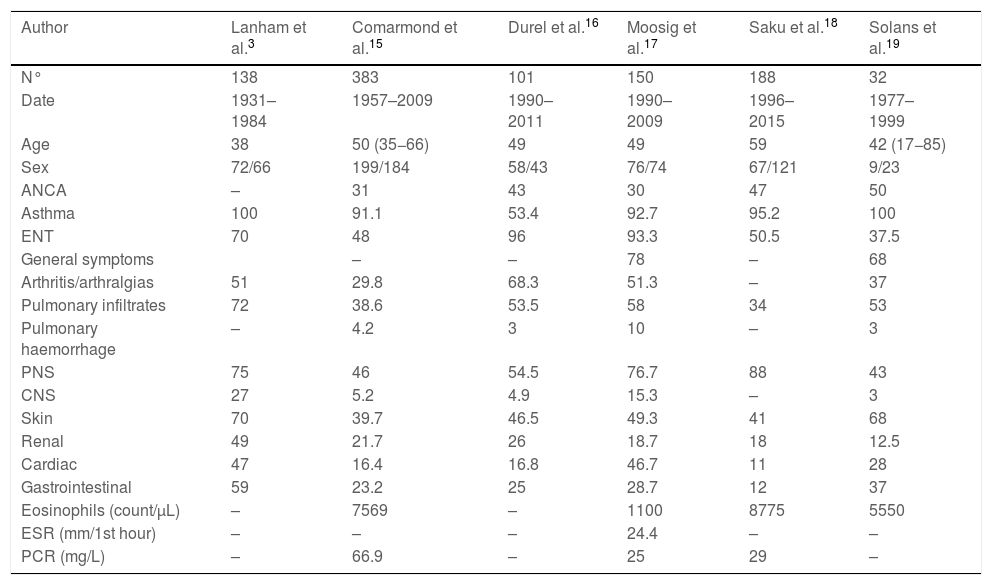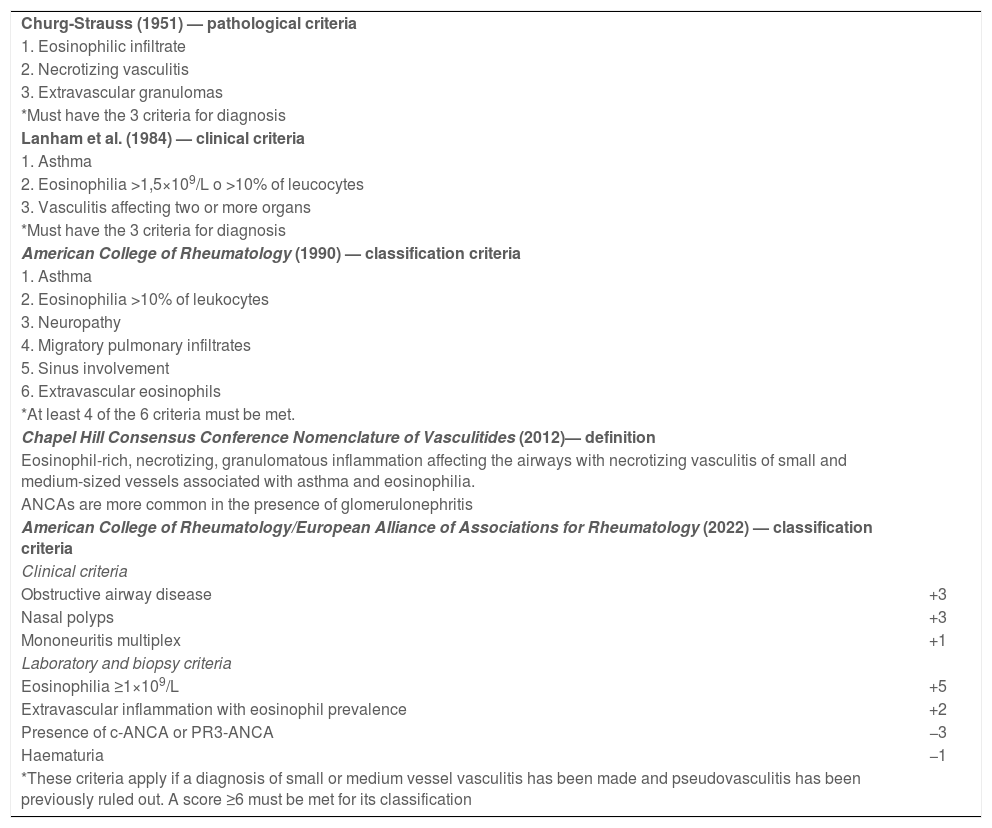Eosinophilic granulomatosis with polyangiitis (EGPA) is a systemic vasculitis characterized by the presence of asthma associated with eosinophilia, eosinophilic infiltration of different organs, and vasculitis of small and medium-sized vessels. Although classified as anti-neutrophil cytoplasmic antibody (ANCA)-associated vasculitis, it occurs in less than half of the patients. The disease is infrequent, typically appearing in patients with asthma and affecting multiple organs such as lung, skin and peripheral nervous system. Treatment has been based on the use of glucocorticoids and immunosuppressants. In recent years, progress has been made in the knowledge of the pathophysiology, in treatment with the inclusion of biologic agents, the classification criteria have been revised and new therapeutic recommendations have been published.
La granulomatosis eosinofílica con poliangeítis (GEPA) es una vasculitis sistémica que se caracteriza por la presencia de asma asociado a eosinofilia, infiltración eosinofílica en diferentes órganos y vasculitis de vasos de pequeño y mediano calibre. Aunque clasificada como vasculitis asociadas a anticuerpos anticitoplasma de neutrófilos (ANCA), estos se presentan en menos de la mitad de los pacientes. Es una enfermedad infrecuente, que aparece típicamente en pacientes con asma y afectando a múltiples órganos como pulmón, piel y sistema nervioso periférico. Su tratamiento se ha basado en el uso de glucocorticoides e inmunosupresores. En los últimos años, se ha avanzado en el conocimiento de la fisiopatología, en el tratamiento con la inclusión de fármacos biológicos, se han revisado los criterios de clasificación y se han publicado nuevas recomendaciones terapéuticas.












